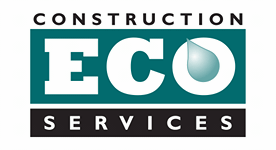Industrial Stormwater Quality – Finding Cost-Effective BMPs
The Multi Sector General Permit authorizes the discharge of stormwater associated with industrial activities into surface water in the state. The EPA is making a push on larger cities in Texas to increase the enforcement on permitted facilities. One of the requirements of the MSGP is annual or bi-annual stormwater sampling. Cities such as Dallas, Fort Worth, and Houston are making an effort to enforce these water quality guidelines. Traditional Best Management Practices (BMP) such as oil/water separators, hydrodynamic separators, detention ponds, and sand filters can’t always provide adequate pollutant removal. Choosing the right BMP starts with maintenance. If you want to increase the probability that maintenance will happen, simplify the maintenance process. The more complicated the strategy, the more expensive the maintenance. For example, hydrodynamic separators allow the captured leaf litter and debris to sit in the water that accumulates in the systems. As a result, these systems go septic in between storm events, which leach nutrients in the stormwater discharge. A study conducted by the Road Ecology Center at the University of California, found that metals and nutrients tend to concentrate on particles smaller than sand and that sediment resuspension occurred in both the catch basin and the hydrodynamic separators (Barbaro, H.L. and Kurison, C.). In addition to the limited suspended sediment removal efficiency of the hydrodynamic separators, the Study found that they were ineffective at removing soluble pollutants, fine particles, floatable solids (debris and litter), and oils and grease. This BMP is only designed to treat the “first flush” of a storm event, while the excess runoff bypasses the system.
There are two effective stormwater quality systems for most industrial facilities; inlet and end-of-pipe (EOP) treatment. Most industrial facilities direct the majority of the stormwater runoff to outfalls that can easily be retro-fitted with innovative stormwater BMPs. Suntree Technologies has developed solutions for both types of treatments that effectively remove pollutants; such as Total Suspended Solids (TSS), Metals, Oil & Grease, Nitrogen, and Phosphorus.
Inlet-Based Stormwater Treatment
Inlet treatment is accomplished with the Grate and Curb Inlet Skimmer Baskets, which incorporate maintenance into their design.One of the unique traits of the skimmer baskets is that the captured sand and debris is kept elevated above the water level and dry. The maintenance doesn’t require the use of a vacuum truck; instead a small crew of workers can accomplish this task within minutes. The sediment removal efficiencies range from 84-93 percent for sand in suspension, with an average grain size greater than 100 microns.
End-of-Pipe Stormwater Treatment
Suntree’s Nutrient Separating Baffle Box (NSBB) offers an effective way to remove pollutants for EOP systems. The NSBB is a flow through system that treats more than the “first flush”; which doesn’t require a bypass for the stormwater discharge. Since the cost of maintaining EOP systems is based on the volume of effluent collected, the NSBB reduces costs by minimizing the stored volume of water. This system can easily be retro-fitted on existing outfalls. The frequency of service should be 1 – 4 times per year determined by the accumulation of sediment and debris in the NSBB. The service will include cleaning the screen system, removing collected sediment from the baffle chambers with a vacuum truck, and inspecting the Storm Boom for replacement in the skimmer system.






